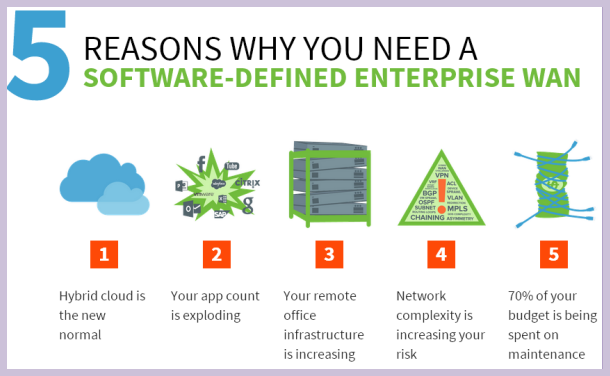Leveraging SD-WAN and SEO for Website Enhancement
In the ever-evolving digital landscape, businesses need a robust online presence that can adapt and thrive. SD-WAN (Software-Defined Wide Area Network) and strategic SEO (Search Engine Optimization) techniques are two powerful tools that, when harnessed together, can lead to substantial website improvement and heightened digital performance. SD-WAN technology streamlines network connectivity, offering businesses a more agile and efficient way to manage their online infrastructure. It optimizes the flow of data, ensuring fast and reliable access to web assets. When coupled with SEO strategies, which are designed to enhance a website’s visibility and reach, a comprehensive approach to website enhancement takes shape.
SD-WAN’s capacity to provide seamless and responsive network management aligns perfectly with the core principles of effective SEO. SEO tips for website improvement encompass various facets, from keyword optimization and content quality to website speed and mobile responsiveness. The efficient data flow facilitated by SD-WAN ensures that your website is not only quick to load but also readily accessible to users, a factor highly valued by search engines. By incorporating well-researched keywords, optimizing content, and refining on-page SEO elements, your website can ascend the search engine rankings. The integration of SD-WAN with SEO amplifies your website’s capabilities, offering a seamless and efficient user experience that not only attracts visitors but retains them, culminating in an elevated online presence and digital success.
Software-Defined Wide Area Networking (SD-WAN) is a technique that simplifies branch office networking in organizations. It is a technique that designs and deploys a wide area network (WAN) and uses software-defined networking to know the most effective method of routing traffic to inaccessible areas.
The network also assures ideal application performance in offices. Unlike the old-style WANs, this one gives increased network vigilance and cuts on costs. That explains why most organizations are installing it in the offices. SD-WAN originate from Software-Defined Networking. Its principle is to non-concrete network hardware then move features from the applications that use the system.
SD-WAN innovations
SD-WAN apply software-defined networking technology and apply to WAN connections. The network covers large physical distances like data centers. The movement intends to transport more network control to the cloud by use of the software approach. Currently, WANs are more complex, have hybrid and have administration layers and optimization with an aim of overcoming drawbacks of telco connections. Additionally, more organizers and other users are moving from the private WAN into the cloud.
You can implement SD-WAN in routers. Some vendors also have their own ranges accesses and admission points. The advantage of merging the two is that users get to enjoy the features that are applicable from within WAN. WAN optimization gives better utilization of enterprise infrastructure; however, it lacks new application areas. SD-WAN on its own give users flexibility and automation; however, it does not efficiently utilize WAN infrastructure. If users integrate the two, they are able to use several physical paths in between places which ensure there is optimization of connectivity for various applications.
SD-WAN technology goals
 The main goal of this network is to deliver a secure, cloud-enabled WAN connection and a business-class connection. It also aims at offering open and software-based technology to its users. It also offers first-class business services such as VPN, applications delivery control (ADC) and WAN optimization.
The main goal of this network is to deliver a secure, cloud-enabled WAN connection and a business-class connection. It also aims at offering open and software-based technology to its users. It also offers first-class business services such as VPN, applications delivery control (ADC) and WAN optimization.
Technology vendors such as Cisco and Riverbed have not been left behind. They come up with specialized appliances for WAN connectivity. They are currently putting their focus on cloud-based WAN to keep up with the trends. The network focuses on customers by providing a secure network that is reliable and cost effective.
Advantages of SD-WAN solutions
Simplifies branch network
The solutions simplify infrastructure in office branches by giving the ability to insert network services on the edge, in regional and enterprise data centers as well as in the cloud. Thus, as an organization, you are sure to enjoy an automated deployment, on-going supervision that has centralized troubleshooting tools.
Delivers branch alertness
Braches can enjoy more than one link, services and devices that have obligatory solutions. It allows several management and reporting systems to integrate.
Optimizes application performance
SD-WAN gives combined visibility and supervision across various WAN links as well as service providers. They provide optimization presentation over cloud applications and hybrid internet connections.
Reduces cost
Cut down on hardware delivery charges and costs by using virtual machine on devices such as commercial-off-the-shelf. You can also choose a based router too or an Edge machine.
